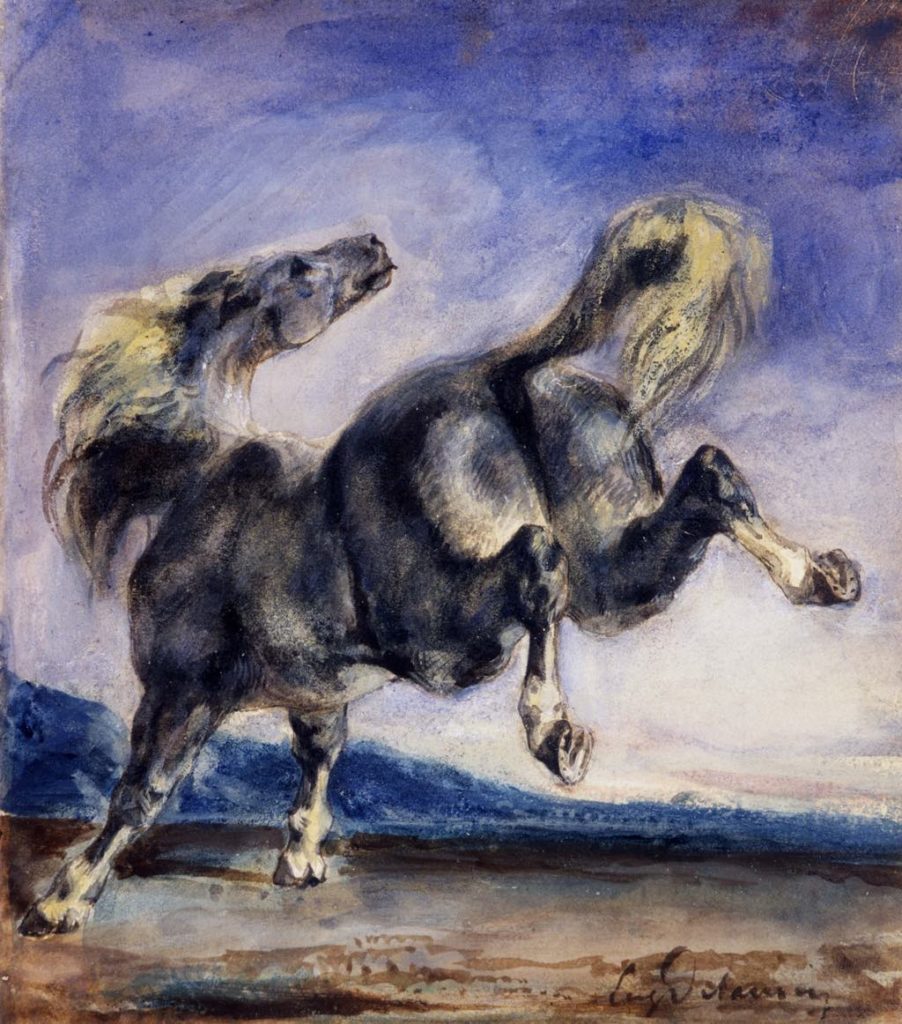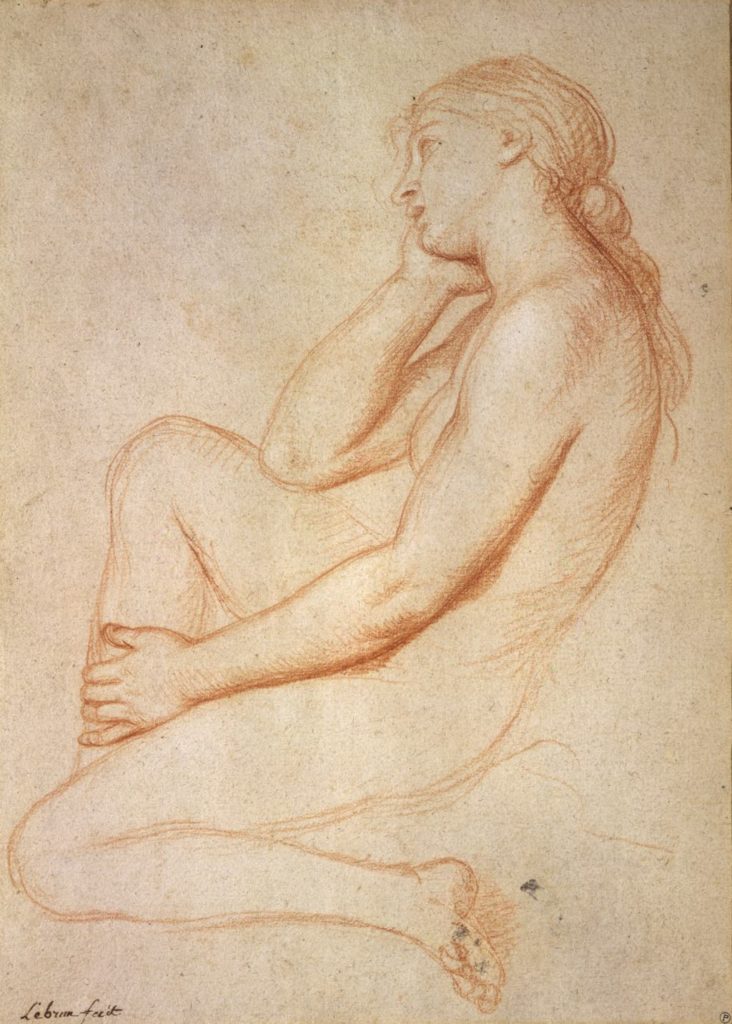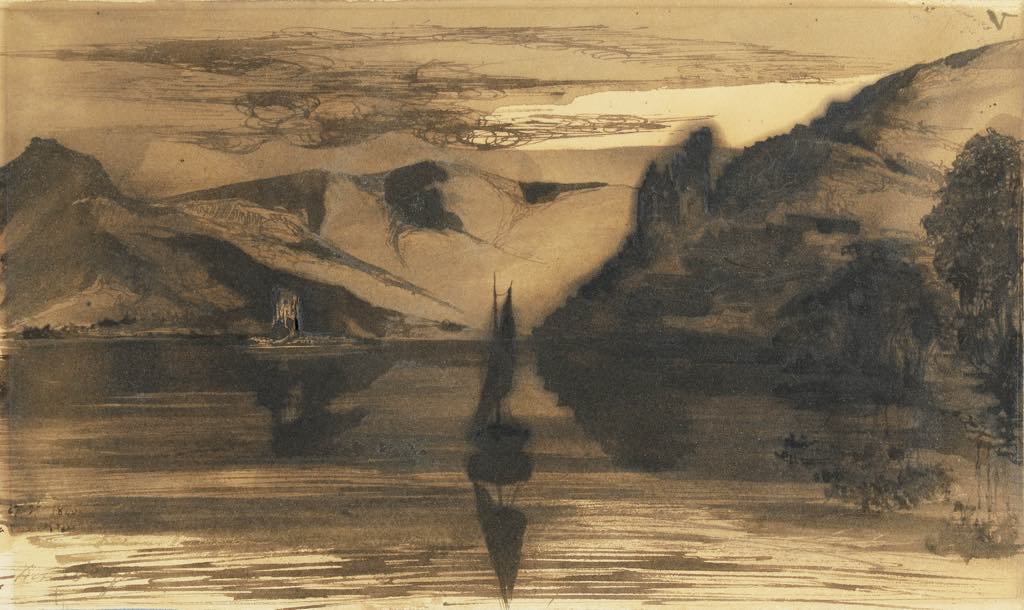
The new exhibition at the Petit Palais, “In the Drawing Room: Masterpieces from the Prat Collection,” takes us on a tour of drawings by French artists from the end of the 16th century to the beginning of the 20th, showing not only changes in styles over time but also the wide variety used within each period.
The Prat Collection, put together by Louis-Antoine and Véronique Prat beginning in the 1970s, is unusual in the wide timespan it encompasses and in the artistic authority of the collectors: Véronique Prat is an art journalist who writes frequently for Le Figaro, while her husband is an art historian and curator who worked for the Louvre’s department of graphic arts for over 40 years and who has many publications to his credit.
So, drawing aficionados can expect the best from this exhibition of over 180 works from the collection. The chronological show begins with a look at the influence of Italian art on French artists who sojourned there, including Claude Lorrain, Jacques Callot, Nicolas Poussin and Simon Vouet. I loved the fluidity of the line in Callot’s ink drawing of two standing men seen from the back, a dancing pantalone (a commedia dell’arte figure) and some gnomes, and in Poussin’s “Pluto Abducting Proserpina.” Lorrain is represented here by a more formal study of Mary Magdalene praying in the desert.

Back in France, artists were working hard to please the king, most notably Louis XIV’s court painter, Charles Le Brun, represented by a number of works, including a moving red-chalk drawing of a pensive nude, her head leaning on her right hand. This figure reappears, clothed, in some of Le Brun’s paintings.
The exhibition shows how the post-Le Brun court artists moved from the classical influence of Poussin to a more Rubenesque emphasis on color. It then ushers us through the Rococo style, with works by Watteau and Boucher, then moves on to the beginnings of realism with Quentin de La Tour, Chardin, Charles-Joseph Natoire and Jean-Baptiste Greuze.
Jacques-Louis David spearheaded the return to antiquity with his neoclassical works, but that style soon gave way to Romanticism, notably represented here by a large group of drawings by Eugène Delacroix, including the wonderful “Wild Horse” – later purchased by Degas for his private collection – and a number of evocative sketches.

There is also a group of dark, powerful drawings by Victor Hugo, which shows how the man’s talents extended far beyond the writing of novels and poetry (he made over 3,000 drawings).
Works by, among many others, Corot (don’t miss the digital presentation of one of his sketchbooks), Manet, Degas, Courbet, Cézanne, and the Symbolists Odile Redon and Gustave Moreau bring us up to the beginning of the 20th century.

I particularly appreciated a few dark Conté pencil drawings by Seurat, including one of a man having his shoes shined on the street while a parade of women’s legs marches past in the background.
As is usually the case in drawing exhibitions, a great many of the works presented in this fine show are studies for paintings, which are pictured at the bottom of the label, sized just slightly larger than a postage stamp and impossible to get a close look at. Please, scenographers, try to be more user-friendly when designing exhibitions!
Favorite
Again I will go. You’ve convinced me.
Can we demonstrate? A manifestation against exhibit designers who insist on putting printed descriptions at toe or knee-level?
Do any of them try to read these labels. Most French attendees will read anything on a wall anywhere. But I decline. Frustrating.